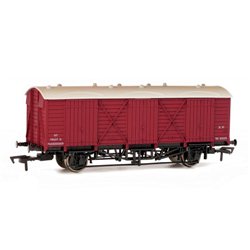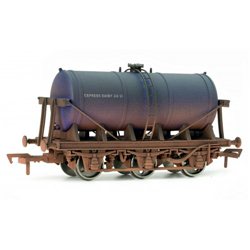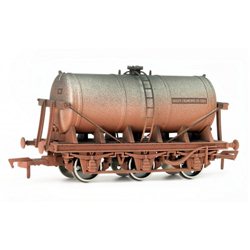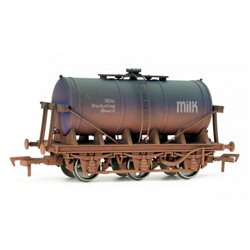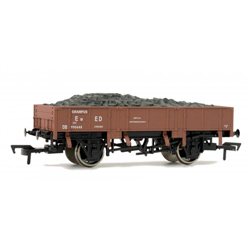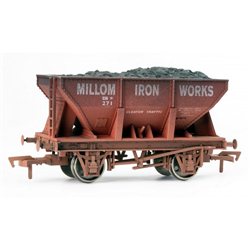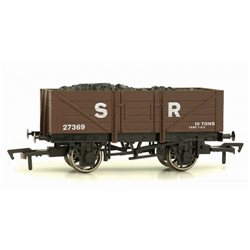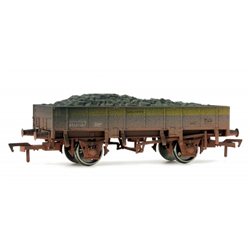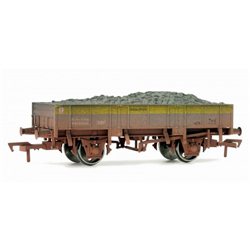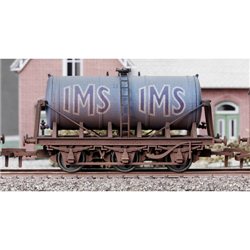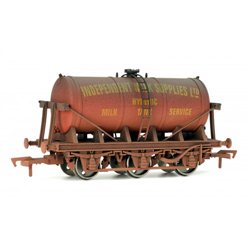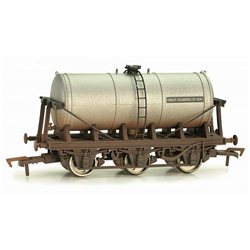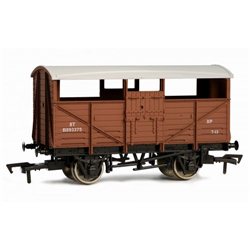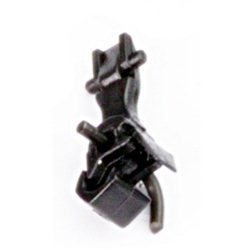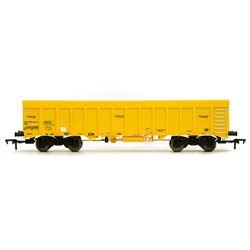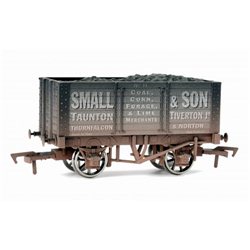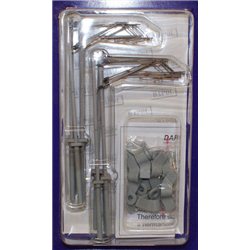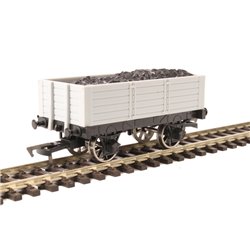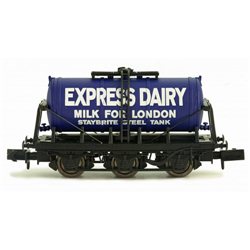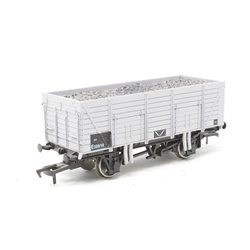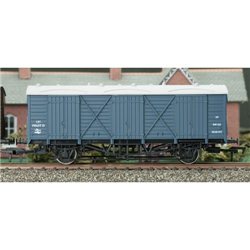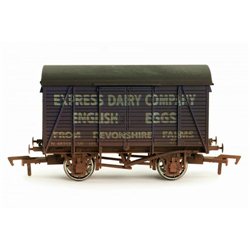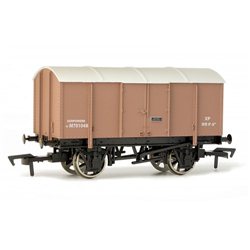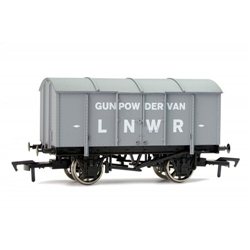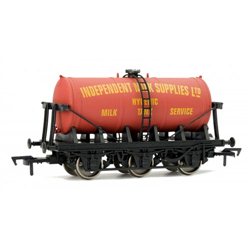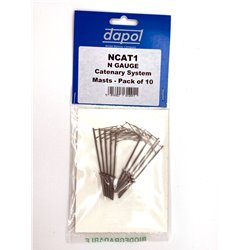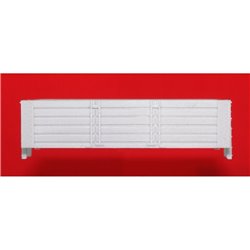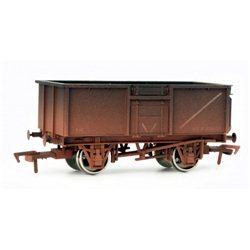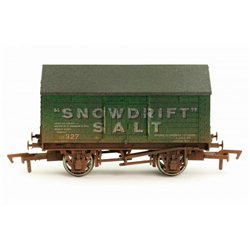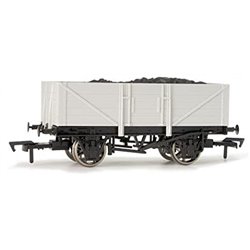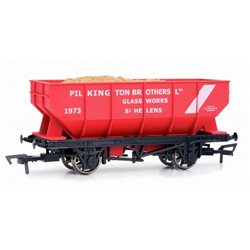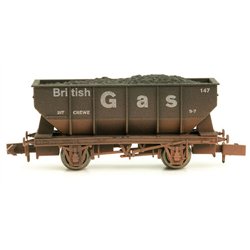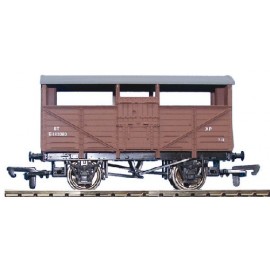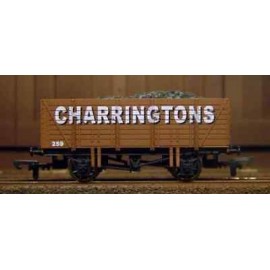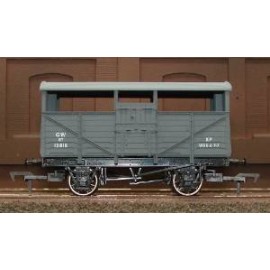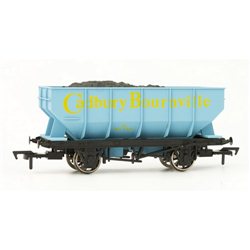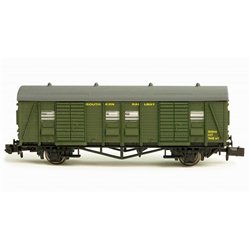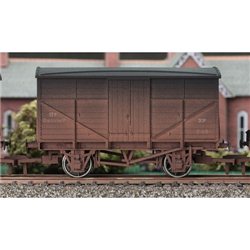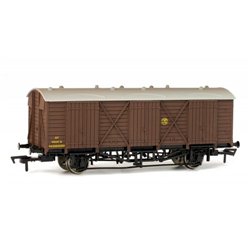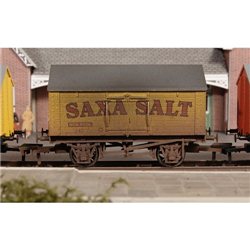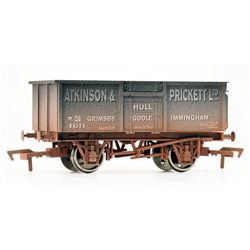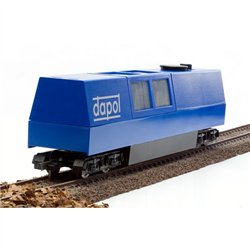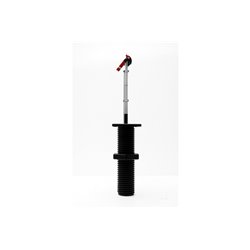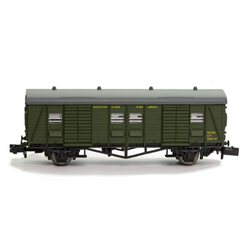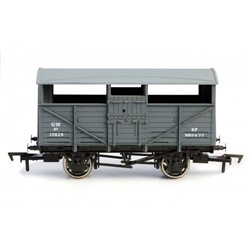Mainline Railways was a British model railway brand that operated between 1976 and 1983, introduced by Palitoy, the...
No products
Product successfully added to your shopping cart
There are 0 items in your cart. There is 1 item in your cart.
Search Tips
List of products by manufacturer Dapol
Fruit D Van BR 2023
4F-014-003
DapolScale: OO (1/76)Fruit D wagons were large ventilated wooden bodied vans designed for the fast and efficient transportation of fruit.
£ 17.80Out of stock6 Wheel Milk Tank Express Dairy Weathered
4F-031-010
DapolScale: OO (1/76)The 6 wheel milk tanker was developed in the 1930’s from the 4 wheel milk tanker.
£ 18.99Out of stock6 Wheel Milk Tank Unigate Silver Weathered
4F-031-004
DapolScale: OO (1/76)The 6 wheel milk tanker was developed in the 1930’s from the 4 wheel milk tanker.
£ 15.40Out of stock6 Wheel Milk Tank MWB Weathered
4F-031-006
DapolScale: OO (1/76)The 6 wheel milk tanker was developed in the 1930’s from the 4 wheel milk tanker.
£ 18.99Out of stockGrampus BR
4F-060-001
DapolScale: OO (1/76)The grampus wagon was the principal open wagon for the engineering departments of BR from the early 1950’s to the early 1980’s. The wagons’ design itself was extremely versatile with drop down sides and removable end planks.
£ 16.50Out of stock24 Ton Steel Ore Millom Iron Works Weathered
4F-033-006
DapolScale: OO (1/76)The 24 ton steel ore hopper was originally designed and produced by Charles Roberts of Wakefield in the early 1930’s and was extensively copied by other manufacturers from this time.
£ 12.90Out of stock5 Plank Wagon 10' Wheelbase SR 27369
4F-051-011
DapolScale: OO (1/76)The 5 Plank Wagon was one of the most common general good wagon built with tens of thousands being manufactured by the rail companies between 1910 and the early 1930’s..
£ 10.95Out of stockGrampus Dutch Livery D8981487 Weathered
4F-060-006
DapolScale: OO (1/76)The grampus wagon was the principal open wagon for the engineering departments of BR from the early 1950’s to the early 1980’s. The wagons’ design itself was extremely versatile with drop down sides and removable end planks.
£ 17.60Out of stockGrampus Dutch Livery D988546 Weathered
4F-060-004
DapolScale: OO (1/76)The grampus wagon was the principal open wagon for the engineering departments of BR from the early 1950’s to the early 1980’s. The wagons’ design itself was extremely versatile with drop down sides and removable end planks.
£ 19.70Out of stock6 Wheel Milk Tank IMS Weathered
4F-031-008
DapolScale: OO (1/76)The 6 wheel milk tanker was developed in the 1930’s from the 4 wheel milk tanker.
£ 16.99Out of stock6 Wheel Milk Tank Independent Milk
4F-031-012
DapolScale: OO (1/76)The 6 wheel milk tanker was developed in the 1930’s from the 4 wheel milk tanker.
£ 19.00Out of stock6 Wheel Milk Tanker Unigate Silver 70346 Weathered
4F-031-014
DapolScale: OO (1/76)The 6 wheel milk tanker was developed in the 1930’s from the 4 wheel milk tanker.
£ 16.00Out of stock6 Wheel Milk Tank SR United Dairy
4F-031-002
DapolScale: OO (1/76)The 6 wheel milk tanker was developed in the 1930’s from the 4 wheel milk tanker.
£ 18.99Out of stock4 Plank Wagon GWR 45506 Weathered
4F-040-006
DapolScale: OO (1/76)The 4 Plank Wagon was built by the GWR in the early 1900’s.to determine which design would make the best general purpose open wagon.
£ 12.40Out of stockCattle Wagon BR B893375
4F-020-005
DapolScale: OO (1/76)Cattle wagons were made in large numbers and were a common sight on rail in all parts of the country until their use was eclipsed by the use of specialised road vehicles.
£ 11.25Out of stockEasi-Fit Magnetic Couplings Medium Arm Multi-Pack (5 Pairs)
2A-000-008
DapolScale: N (1/148 - 1/160)N Gauge Easi-Fit Magnetic Couplings Medium Arm Multi-Pack (5 Pairs) Easi-Fit magnetic couplings are an easy way to convert your NEM rolling stock for hands free remote coupling and uncoupling. These are the medium arm variant and the pack contains five pairs of couplings. Knuckle length from the pocket front to the end of the knuckle approximately 7.6mm
£ 29.10In stockIOA Network Rail Ballast Wagon 3170 5992 065-6
4F-045-003
DapolScale: OO (1/76)The Romanian built IOA wagon is a type of high sided open wagon designed to carry ballast and spoil.
£ 22.60Out of stock7 Plank Wagon Small & Son 9' Wheelbase Weathered
4F-072-004
DapolScale: OO (1/76)The 7 plank wagon was the standard coal wagon up to the 1930’s when steel mineral wagons were developed. In 1923 the RCH produced a standard plan for the 7 plank wagon, as up to this time there were many variations depending on the builder and region.
£ 14.20Out of stockCatenary Masts (10)
OOCAT1
DapolScale: OO (1/76)Dapol innovative Easi-Fit Catenary masts are an ideal additon to any OO Gauge layout with an electric theme.
£ 14.00In stockUnpainted 5 plank wagon with 9ft wheelbase
A015
DapolUnpainted 5 plank wagon with 9ft wheelbase
£ 9.50Out of stock6 wheels Milk Tanker - Express dairy
2F-031-002
DapolScale: N (1/148 - 1/160)6 wheels Milk Tanker - Express dairy
£ 14.10Out of stockFruit D Van Blue W38107
4F-014-007
DapolScale: OO (1/76)Fruit D wagons were large ventilated wooden bodied vans designed for the fast and efficient transportation of fruit.
£ 19.40Out of stockBox Van Devonshire Eggs Weathered
4F-021-101
DapolScale: OO (1/76)Box Vans were the workhorses of the early freight industry moving general merchandise and perishable goods and thousands were built over several designs and over a large time period.
£ 12.20Out of stockGunpowder Van BR
4F-013-009
DapolScale: OO (1/76)Gunpowder vans were especially constructed vans designed for the safer transport of gunpowder and other potentially explosive substances.
£ 11.20Out of stockGunpowder Van LNWR
4F-013-003
DapolScale: OO (1/76)Gunpowder vans were especially constructed vans designed for the safer transport of gunpowder and other potentially explosive substances.
£ 11.20Out of stock6 Wheel Milk Tank Independent Milk Supplies
4F-031-011
DapolScale: OO (1/76)The 6 wheel milk tanker was developed in the 1930’s from the 4 wheel milk tanker.
£ 17.90Out of stockSingle Track Catenary Mast (10)
NCAT1
DapolScale: N (1/148 - 1/160)Dapol innovative Easi-Fit Catenary masts are an ideal additon to any N Gauge layout with an electric theme.
£ 10.50In stockUnpainted 5 plank wagon body (9ft chassis)
B015
DapolUnpainted 5 plank wagon body (9ft chassis) This unpainted body is ready for painting and fixing to a 9ft Wheelbase Chassis.
£ 1.60Out of stock16 Ton Steel Mineral Wagon BR Bauxite Weathered
4F-030-002
DapolScale: OO (1/76)£ 11.75Out of stockSalt Van Snowdrif Weathered
4F-018-012
DapolScale: OO (1/76)The efficient movement of salt was fundamental to the growth of Britain as an industrial nation. Salt was transported from the main mining areas in Cheshire, Lancashire, Yorkshire and the West Midlands in especially constructed salt vans.
£ 12.00Out of stock21 Ton Hopper Pilkington
4F-034-019
DapolScale: OO (1/76)On nationalisation, the newly formed BR inherited a vast assortment of rolling stock designed to carry coal.
£ 11.40Out of stock21 Ton Hopper wagon "British Gas" - weathered
2F-034-026
DapolScale: N (1/148 - 1/160)21 Ton Hopper wagon "British Gas" - weatheredThe 21 Ton Steel Hopper was based on the LNER design and was used from 1948 to the early 1980's as hte standard BR coal hopper.
£ 11.10Out of stockBR Cattle Wagon 893373
B501A
DapolScale: OO (1/76)BR Cattle Wagon 893373Cattle wagons were made in large numbers and were a common sight on rail in all parts of the country until their use was eclipsed by the use of specialised road vehicles.
£ 10.70Out of stock9-plank open wagon "Charringtons"
B641
DapolScale: OO (1/76)9-plank open wagon "Charringtons"Coal Wagon No.259 - Brown Livery
£ 10.20Out of stockGWR Cattle Wagon 13818
B500A
DapolScale: OO (1/76)GWR Cattle Wagon 13818Cattle wagons were made in large numbers and were a common sight on rail in all parts of the country until their use was eclipsed by the use of specialised road vehicles.
£ 9.70Out of stock21 Ton Hopper Cadbury Bournville 156
4F-034-001
DapolScale: OO (1/76)On nationalisation, the newly formed BR inherited a vast assortment of rolling stock designed to carry coal.
£ 11.40Out of stockCCT Van SR Olive Green #S2284S
2F-047-005
DapolScale: N (1/148 - 1/160)CCT Van SR Olive Green #S2284S
£ 17.00Out of stockBR Fruit Mex B833347 Weathered
4F-015-004
DapolScale: OO (1/76)After changes in legislation regarding animal welfare and transport, many older style cattle wagons became redundant and alternative uses had to be found.
£ 13.75Out of stockFruit D GWR Shirtbutton 2881
4F-014-001
DapolScale: OO (1/76)Fruit D wagons were large ventilated wooden bodied vans designed for the fast and efficient transportation of fruit.
£ 19.10In stockSalt Van Saxa Weathered
4F-018-002
DapolScale: OO (1/76)The efficient movement of salt was fundamental to the growth of Britain as an industrial nation. Salt was transported from the main mining areas in Cheshire, Lancashire, Yorkshire and the West Midlands in especially constructed salt vans.
£ 11.80Out of stock16 Ton Steel Mineral Wagon ATKINSON & PRICKETT Weathered
4F-030-008
DapolScale: OO (1/76)The 16 Ton Steel Mineral Wagon was a product of war time, when the requirement for coal soared and efforts were made to transport it more efficiently.
£ 11.80Out of stockLMS Box Van 611421
4F-021-003
DapolScale: OO (1/76)Box Vans were the workhorses of the early freight industry moving general merchandise and perishable goods and thousands were built over several designs and over a large time period.
£ 10.40Out of stockMotorised track cleaner
B800
DapolScale: OO (1/76)Motorised track cleanerThis model needs to be hauled by a locomotive, as 'motorised' merely reflects the motor driving the cleaning heads and not the movement of the model.
£ 90.00In stockSignal - Motorised, GWR home lower quadrant
2L-001-001
DapolScale: N (1/148 - 1/160)Signal - Motorised, GWR home lower quadrant Dapols Single post semaphore signals are easy to fit and operate and offer an affordable route to accurately model working N Gauge signals.
£ 37.80In stockCCT parcel van in Southern green #S2279S
2f-047-001
DapolScale: N (1/148 - 1/160)CCT parcel van in Southern green #S2279S
£ 16.30Out of stockCattle Wagon GWR 13824
4F-020-003
DapolScale: OO (1/76)Cattle Wagon 13824 GWR Cattle wagons were made in large numbers and were a common sight on rail in all parts of the country until their use was eclipsed by the use of specialised road vehicles.
£ 10.40Out of stock






